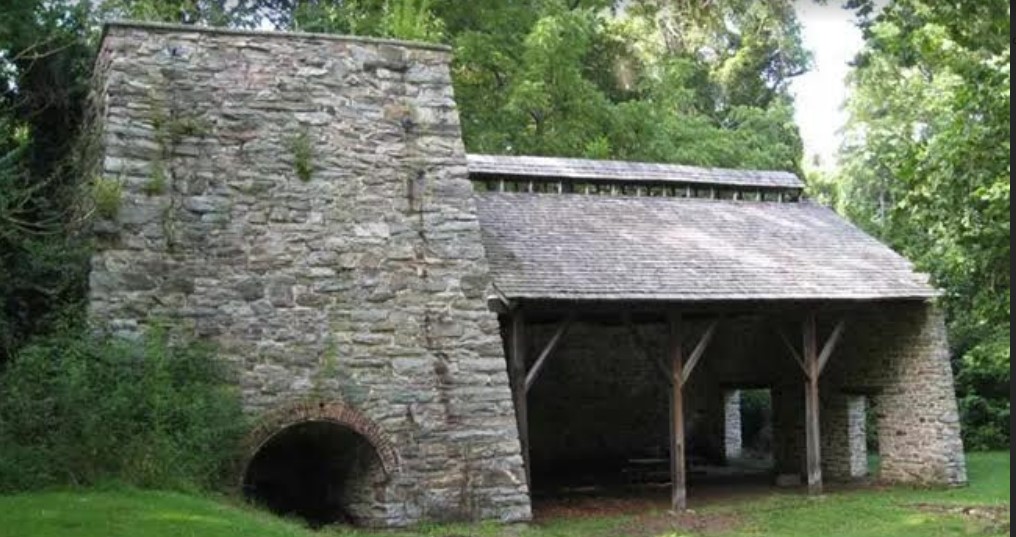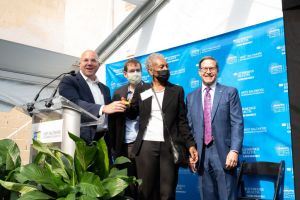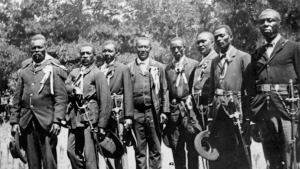By Special to the AFRO
A recent DNA analysis has made newfound discoveries that identify living descendants of African Americans buried in a Maryland cemetery at Catoctin Furnace, an iron forge that operated in the eighteenth and nineteenth centuries using the labor of free and enslaved Black folks. Scholars determined that 42,000 living people descend from those buried at the cemetery.
The study’s findings, published in the journal Science, are especially notable given that existing evidence of African American family histories are scarce. Many historians feel the national archives failed to adequately preserve African American histories since the dawn of slavery causing African Americans to struggle when working to trace their origins.
“We developed an approach that…has the power to restore knowledge about the lives of historical individuals — like those of enslaved people within the United States — that was not captured by the historical record,” said Éadaoin Harney, lead author on the study and a population geneticist at 23andMe.
“Archaeology provides a voice to the 99 percent who were non-elites yet played their part in shaping history,” noted Elizabeth Anderson Comer, president of the Catoctin Furnace Historical Society. “Left out of the written record in name and deed, their presence is revealed within the archaeological record through excavation and interpretation.”
The historical society partnered with Smithsonian researchers, scientists at Harvard University and Boston University, and geneticists at 23andMe for the study. They drew their findings after comparing DNA from 27 individuals from the cemetery, which was excavated for highway construction 40 years ago, to the DNA of consenting 23andMe customers.
In addition to finding evidence of biological family groups and their living African relatives, the authors found evidence of possible distant relatives in the United States.
“But the study also identified the ancestral origins of the people who worked at the Catoctin Furnace,” said Harney, “mostly tracing back to the African regions of what is now Senegal and Gambia and Angola and the Democratic Republic of Congo. We also found that many of these individuals also had European ancestry that traced back largely to present-day Great Britain and Ireland. This presence of European ancestry is likely due to the sexual exploitation of enslaved women.”
The Catoctin iron-working Furnace operated from the 1770s-1840s with more than 100 laborers, many of whom were enslaved or free Black folks. Some were even brought directly from Africa for their profitable iron working skills, according to the historical society. Many laborers were buried on the furnace grounds in unmarked graves.
Archaeologists excavated 35 graves in 1979 for the construction of a highway, giving the remains to the Smithsonian Institution. Comer set out to initiate an analysis of the remains in 2014.
“As an archaeologist and historian, I saw the potential of a reanalysis of the 1979 archaeological investigation utilizing 21st century advances in the field such as stable isotope, heavy metals analysis, and DNA,” Comer told Afro.
The group of scholars produced and compared genome-wide data for the 27 individuals buried at the site to about 9.3 million consenting research participants genotyped by 23andMe. They aimed to detect “identical-by-descent” segments of the genome shared by those buried at the cemetery and 23andMe research participants. When two or more people share these segments of DNA, it’s evident that they inherited them from a recent common ancestor.
“While our initial reanalysis included digitization of metric data from the skeletal remains to track population migrations, a methodology that can be productive when there is little or no historical documentation available, the introduction of aDNAdata has the ability to provide definitive linkages,” said Comer. “aDNA is the ultimate tool, providing the potential for direct genealogical connections for living populations.”
Through the study, they identified five genetic families among those buried at Catoctin and 41,799 close and distant relatives of those individuals. They also discovered that the highest concentration of living relatives was in Maryland.
“This suggests that at least some of the descendants of the Catoctin individuals likely stayed in the region after the furnace transitioned away from enslaved labor,” said Harney.
The research project wasn’t void of hardship, said museum specialist Kari Bruwelheide, an author of the study.
“Roadblocks included the difficulties of finding archival documents related to these individuals, whose names and experiences often went completely unrecorded during their lifetimes,” she said. “During the production of the Smithsonian Channel film on Catoctin (Forged in Slavery) there was a breakthrough in connecting records from Antietam Furnace with those of Catoctin and a descendant family was identified. This was extremely fortunate and indicates dedicated work can make breakthroughs, even when records seem sparse.”
The team at 23andMe is “currently exploring the best ways to return results” to research participants and customers, said Harney.
“Our goal is to provide an ancient DNA feature for 23andMe customers,” she added.
With the General Society of Mayflower Descendants (GSMD) having gathered ample evidence that identifies descendants of pilgrims who traveled on the Mayflower ship in 1620, Comer hopes that the Catoctin study produces similar findings in the future.
“My hope is that the aDNA data at Catoctin contain the potential (if desired) to create an exclusive descendant group, perhaps named the Iron Line,” she said, “connecting back to Africa with strategic storylines to counter the primacy of groups such as the GSMD.”
The cemetery at Catoctin is one of many historically Black cemeteries in the United States that advocates have sought to investigate and preserve. The Bethesda African Cemetery Coalition, for example, is fighting to protect the Moses Macedonia African Cemetery in Bethesda, MD from developers who wish to construct atop the burial grounds. Beyond preserving the grounds, the coalition seeks to keep the local community educated about the historic Black community. Those involved in the study concerning Catoctin have similar aspirations.
“This knowledge was severed by slavery – a truth that has implications for African Americans far beyond the community of Catoctin Furnace,” Bruwelheide told AFRO. “This study demonstrates the power of genomics to reconstruct some of what has been destroyed. For African American and United States history, revealing these stories and family legacies is important to understanding and acknowledging who we are, where we came from, and how we are connected to each other today.”
“It is certainly giving voice to the 27 individuals as it acknowledges their origins and centers their histories within the broader context of the United States,” she added. “In this way, it restores the identity stripped by enslavement.
The post DNA study links thousands living descendants to African Americans buried at a former Maryland slave site appeared first on AFRO American Newspapers .












